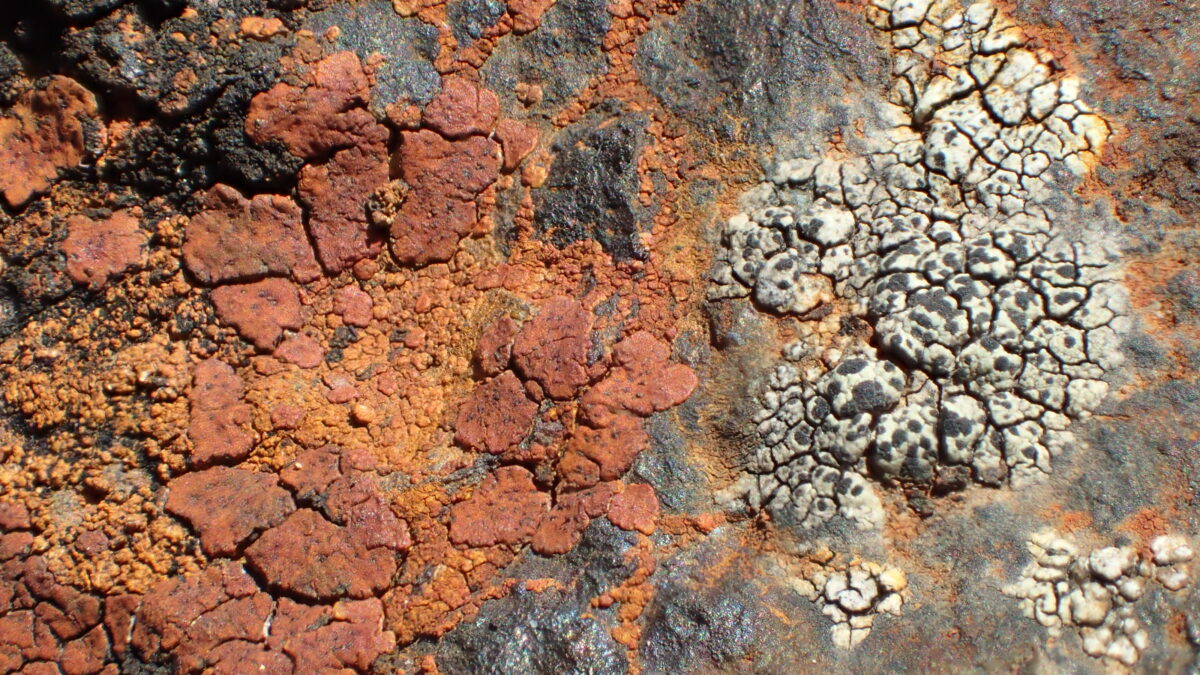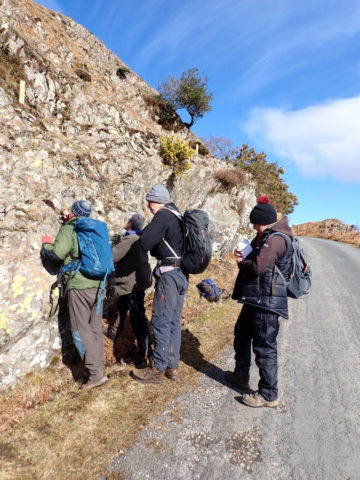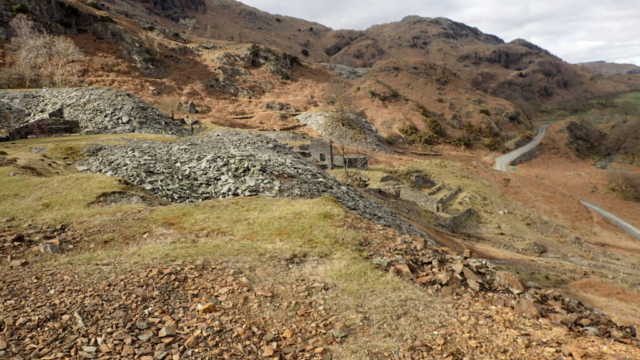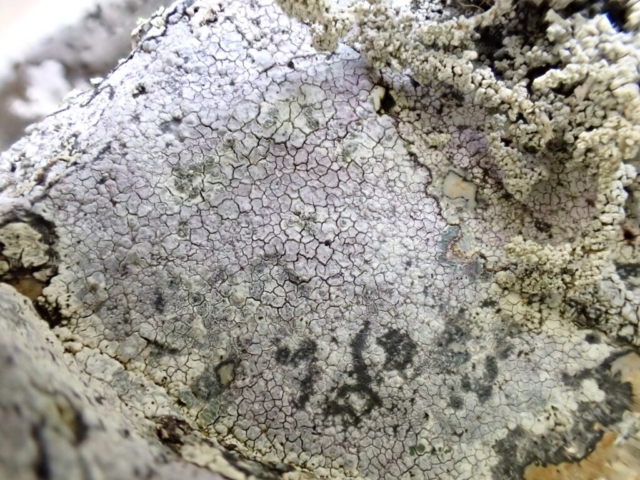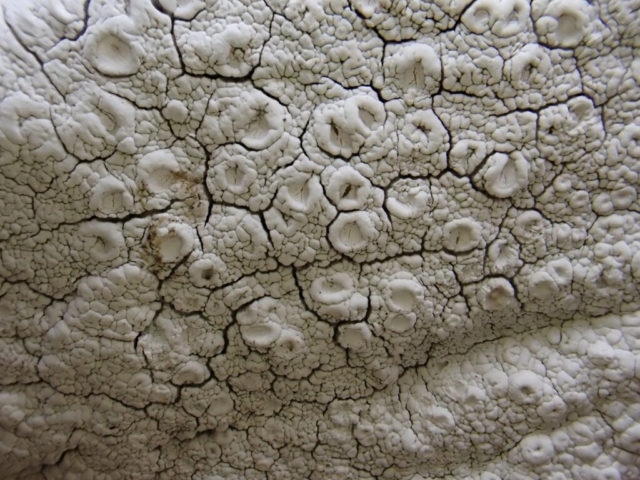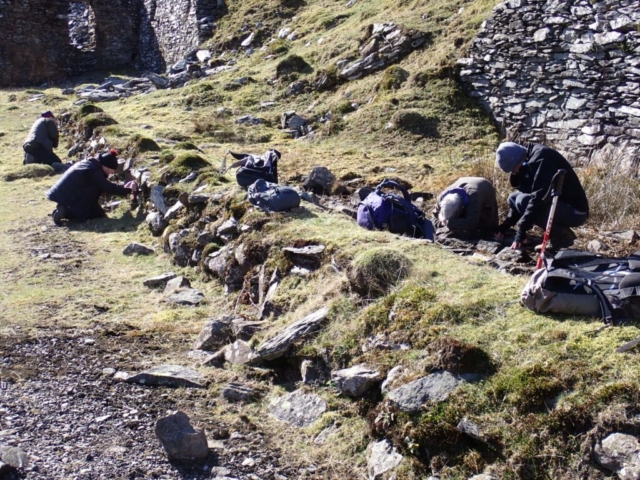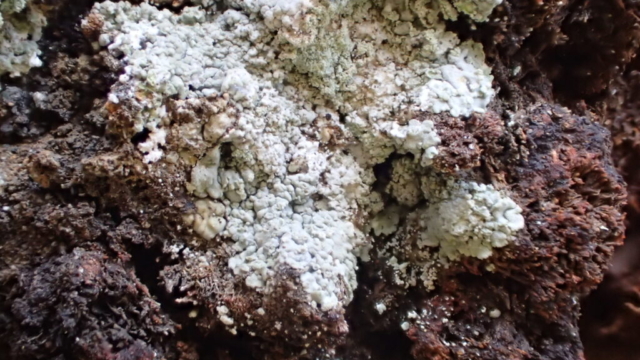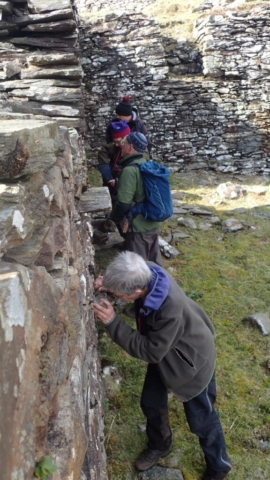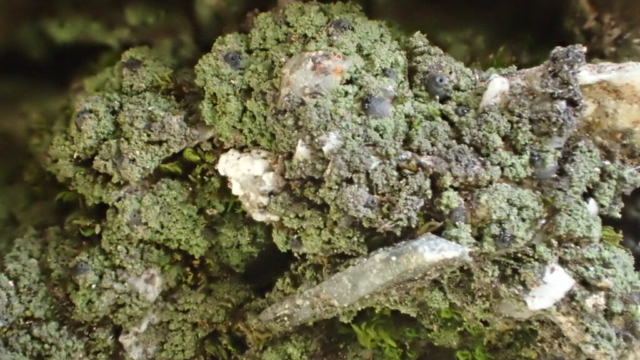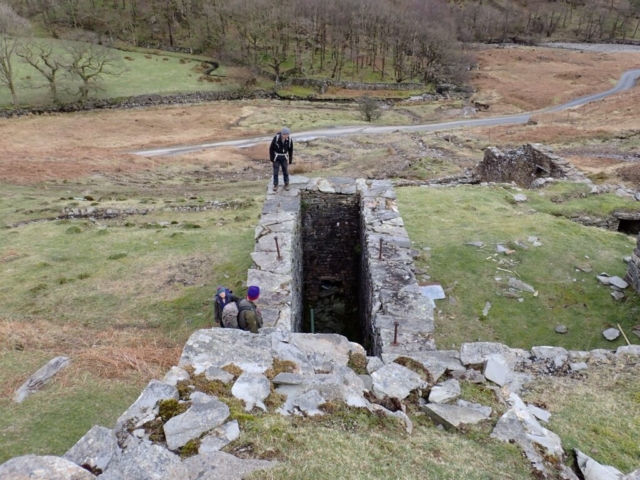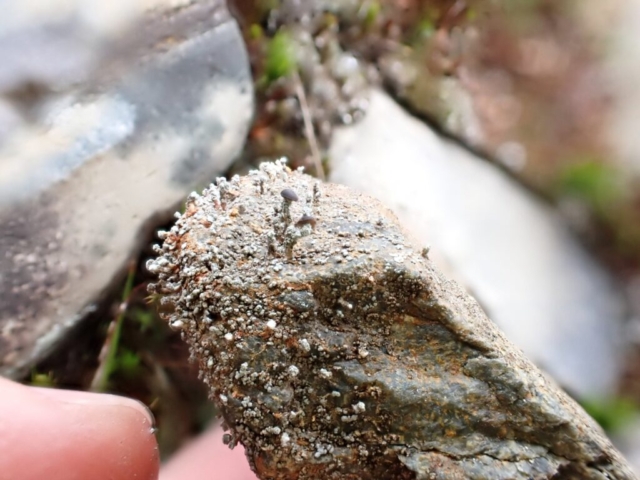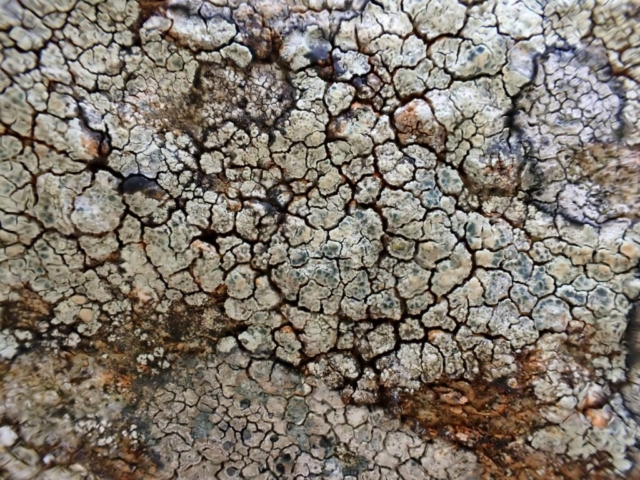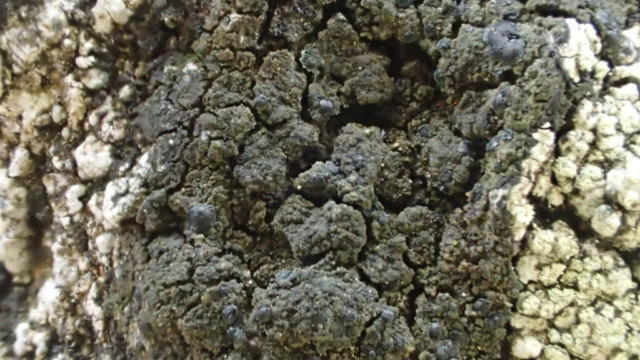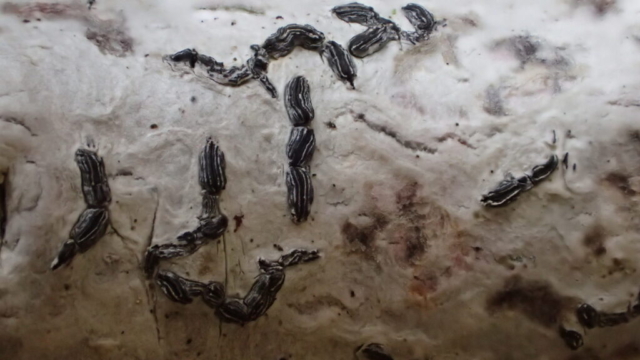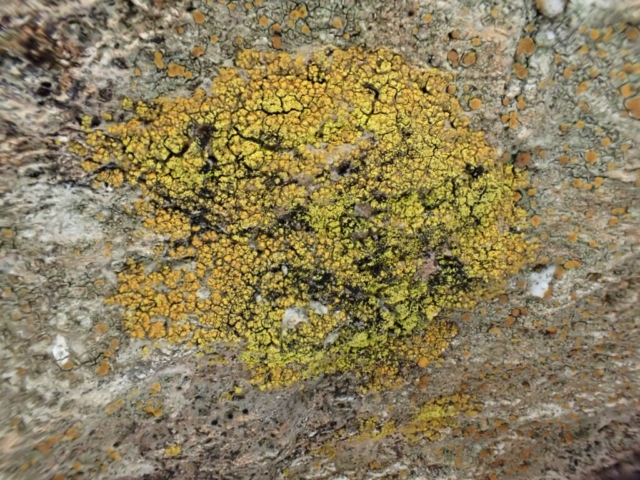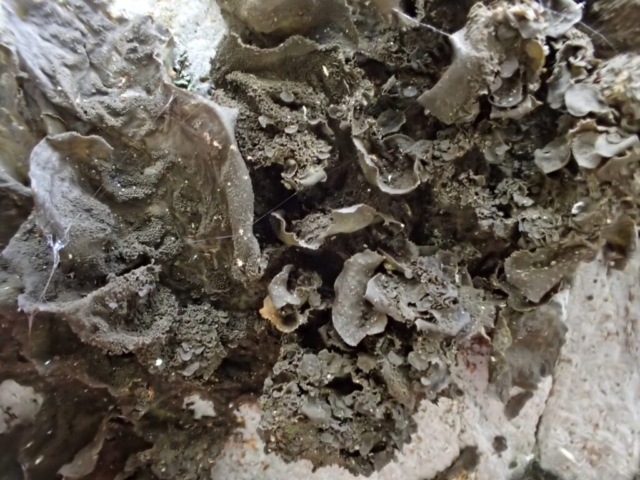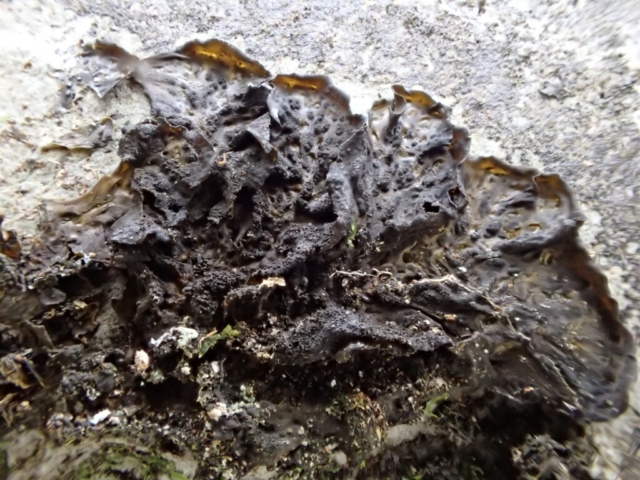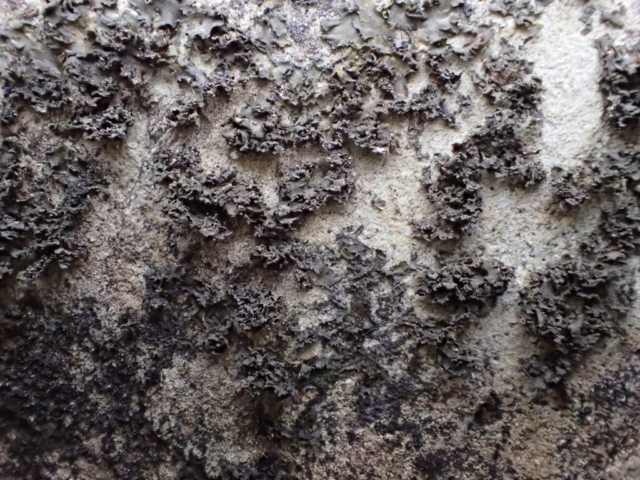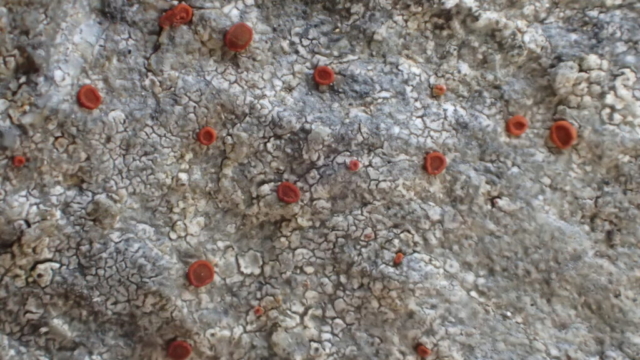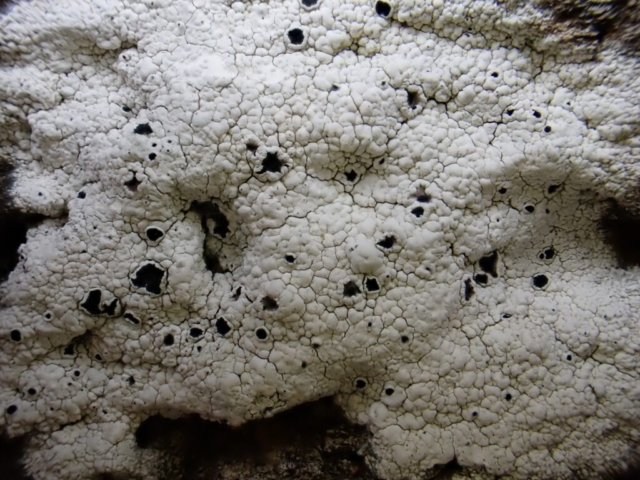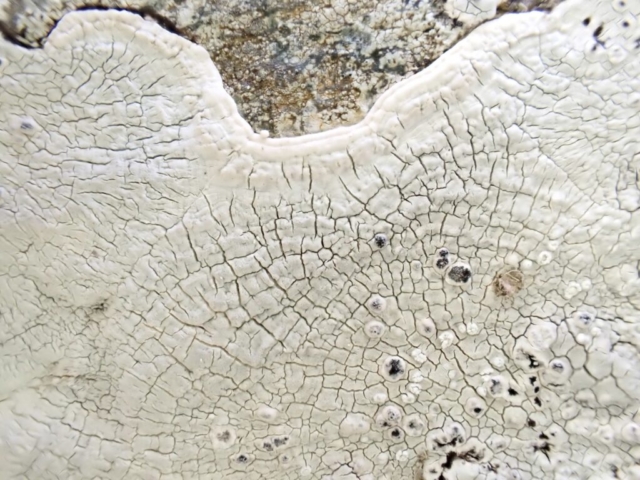Cards on the table. Tilberthwaite is one of my favourite areas of the Lakes. The gnarly landscape has woods and rocks and old mines and becks and a gorge and quarries and vernacular architecture. There’s access to the Coniston Fells and it’s never as busy as Coniston itself, or nearby Langdale. On past wanderings I’ve found Bunodophoron melanocarpum and Sticta fuliginosa. And this morning, as I pulled my boots on, a Red Squirrel ran up Tilberthwaite Beck just feet away from me.
There were only five of us in the lichen party as we set off towards Penny Rigg Copper Works. This was built in the 1860s when a new tunnel was driven through the rock for over a kilometre to the Tilberthwaite mine. But the works closed down after only a decade, and though there were one or two short reopenings, slate quarrying prevailed across the hillside for most of the next century.
Needless to say, we didn’t make it to the copper works without being distracted. A roadside outcrop provided the first saxicolous crusts of the day: Porpidia tuberculosa, Rhizocarpon reductum, Ochrolechia parella. There was also the first signs of the country rock being a bit more basic in places: Protoblastenia rupestris and Rhizocarpon petraeum.
After finally making it to the works, we were distracted by a sign that told us “lichens thrive here”. We hoped so. And got started on the ground around the old settling ponds, where ore was separated from waste rock (gangue). A Pied Wagtail chissicked away: the ruins must be perfect breeding habitat. We soon found some of the brightly coloured metalliferous species we were hoping for- reds in the settling beds? There was Tremolecia atrata, with concave apothecia, Rhizocarpon (now Haugania) oederi with gnarly apothecia and plates of Acarospora sinopoica. We didn’t find any Lecidea silacea– maybe it’s around somewhere.
On the walls of the old crushing mill and dressing mill there was Baeomyces placophyllus, with its squamulose lobes, Gyrographa gyrocarpa, Enterographa zonata and Myriolecis antiqua. A green crust in a crack had black perithecia with the most impressive ostioles and spores so large they could be seen in photographs of the perithecia. It’s still not clear what it is- possibly a number of things growing together. There was Sterocaulon pileatum: one of the “Fisher Price people” was wearing a black beret of an apothecia. Despite careful observation of the sorediate Lecanoras I couldn’t find any L. handelii. Whilst the colour of some was greyer than I might expect for L. soralifera, the soredia were rising from the areole centres and there was no UV reaction.
Moving uphill , we entered the cleft where the adit towards Tilberthwaite mine began. The lichens reflected the probably less acid rock: there were sheets of Peltigera praetextata; Normandina pulchella and Agonimia tristicula on the mosses; Collema furfuraceum rosettes. A brown isidiate species was eventually determined to be Placynthium nigrum.
The walls of the old powder house, a separate building to minimise damage from potential explosions, were explored. There were plates of Ochrolechia parella, lots of orange apothecia from Blastenia ( was Claoplaca) crenularia and Tephromela atra. The latter supported Lecanora sulphurea growing parasitically in its early stages. Glaucomaria (was Lecanora) rupicola had Arthonia varians forming black patches on the apothecia.
Further south, where massed tree planting has recently taken place, we found Cladonia species aplenty, Scoliciosporum umbrinum on the rock and Graphis elegans grew on a stunted holly.
The day was coming towards the end…but another slate quarry distracted us. Once again it had more basic rock and lichens including Scytinum lichenoides and a number of Caloplaca species. Some small lecanorine apothecia keyed out to Myriolecis dispersa, but didn’t look quite right. Or is that just that we normally see it in very different circumstances? Caz worked out that there was Collema glebulentum as well as more C. furfuraceum and C. flaccidum.
With a list of about 100 species we can say it was a good day in a grand place. Thank you everyone for helping make it so.
Text: Pete Martin
Photos: Chris Cant, Paul Hanson, Caz Walker, Peter Bisset, Pete Martin
